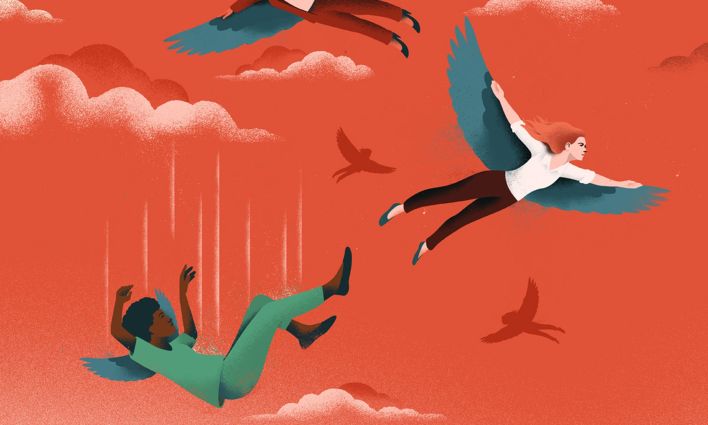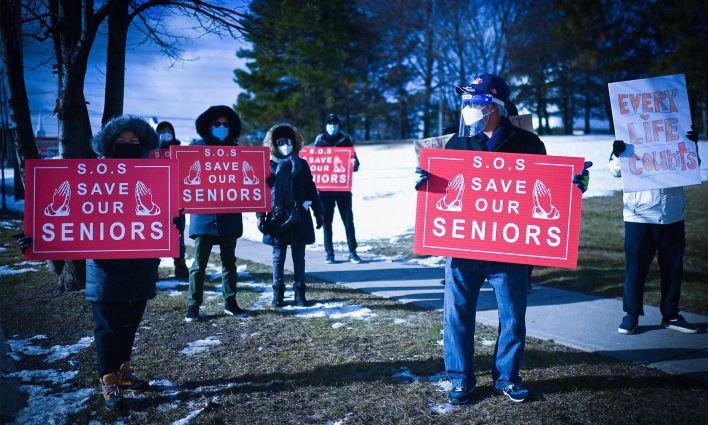THIS HAS BEEN a whirlwind of a year for the disability community, their families, support workers and friends. The COVID-19 response began in March 2020 with announcements from the federal government that it was going to take care of Canadians. During the early briefings, we learned more about this fast spreading new virus as we went into lockdown across the country. And we waited.
Early on in Canada’s pandemic experience, the federal government announced that it would establish the Canada Emergency Response Benefit (CERB) to provide wage replacement funds to those who lost employment due to pandemic closures: a $2,000 per month benefit for up to four months. It came as an absolute shock to Canadians with disabilities that the government felt the livable monthly minimum income is $2,000, when the maximum amount a person can receive from the Canada Pension Plan’s Disability Benefit, by contrast, is $1,362 per month.
For months, the disabled community watched as announcements were made with new supports for businesses, students, seniors, and working Canadians. Absolutely, there are disabled people within these groups, but there are millions of Canadians who aren’t and who are left waiting, without relief. Three provinces, British Columbia, Saskatchewan, and Manitoba, offered some form of top up to provincial disability payments. British Columbia offered a monthly top up of $300 per month for people receiving disability assistance, reduced to $150 for the first three months of 2021, then eliminated. Manitoba offered a one-time $200 top up. Saskatchewan provided $100 per month from June to September 2020 to caregivers of people with intellectual disabilities.
Finally, on June 5, 2020, 132 days after the first case of COVID-19 in Canada, Prime Minister Trudeau announced a bill with measures including a one-time payment of $600 for people with disabilities who were registered for the Disability Tax Credit (DTC). However, an estimated 60% of Canadians with disabilities do not meet the eligibility requirements and, therefore, will not benefit from the program. This rampant ineligibility relates to how disability is defined under the DTC. The Council of Canadians with Disabilities has long called for reforms to the DTC, including changing the definition of disability to be more inclusive and representative of the lived reality of disabled Canadians.
Many of the cracks and barriers that predated the pandemic have widened over the last year, and governments need to take a hard look at how enacting policies and programs without a disability lens has led to growing inequity and inaccessibility.
Beyond financial supports—or lack thereof—disabled people have spent the past year navigating landscapes radically changed by the pandemic. COVID-19 safety measures rolled out quickly, and often without input from the disabled community. Without considering the need for a disability audit of newly introduced measures, many disabled people have experienced
new or heightened barriers when navigating reopened businesses and services. Finally, in September’s Throne Speech, the disabled community heard that some relief was forthcoming, in the form of the new Canadian Disability Benefit. However, these changes are contingent on a minority government being able to pass new legislation and meet these commitments, and it assumes that we will not have an early election; a possibility that continues to loom.
Still, the seismic change wrought by this pandemic has unearthed some positive change for disabled people across Canada. Namely, this year we have learned that it is possible for many of us to complete our work from home, and I hope, moving forward, that working from home will continue to be an option, especially for people with disabilities.
The pandemic and the experiences of disabled Canadians during this time offer valuable lessons on where Canada must invest, focus and improve. Many of the cracks and barriers that predated the pandemic have widened over the last year, and governments need to take a hard look at how enacting policies and programs without a disability lens has led to growing inequity and inaccessibility for so many. Going forward, Canada needs to review all of the policies and programs that were implemented during the pandemic, and address any latent discrimination. There is a need at both the policy level and the community level to address assumptions about what disability looks like and who is impacted by disability. And Canada needs to look at how, and why, so many programs and services for people with disabilities are relegated to the work of charities and underfunded secondary service providers. All Canadians need to hold governments accountable as the pandemic continues, and afterward. Failure to do so will only further entrench discrimination for people with disabilities.








